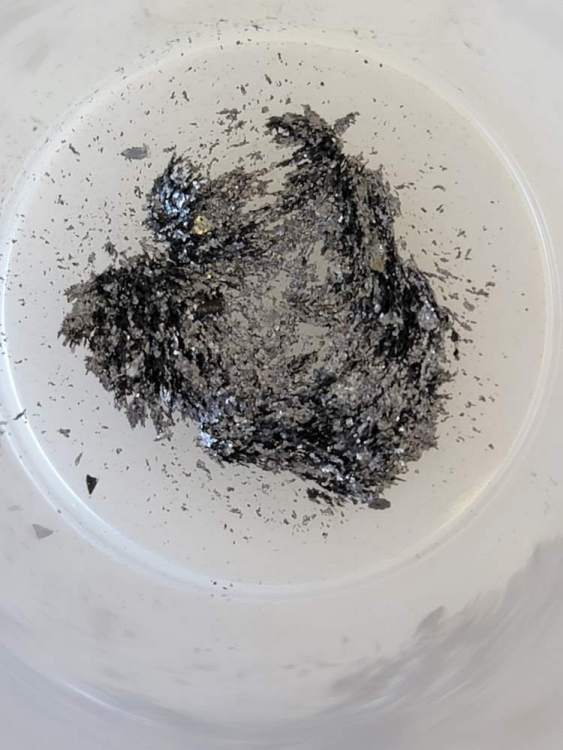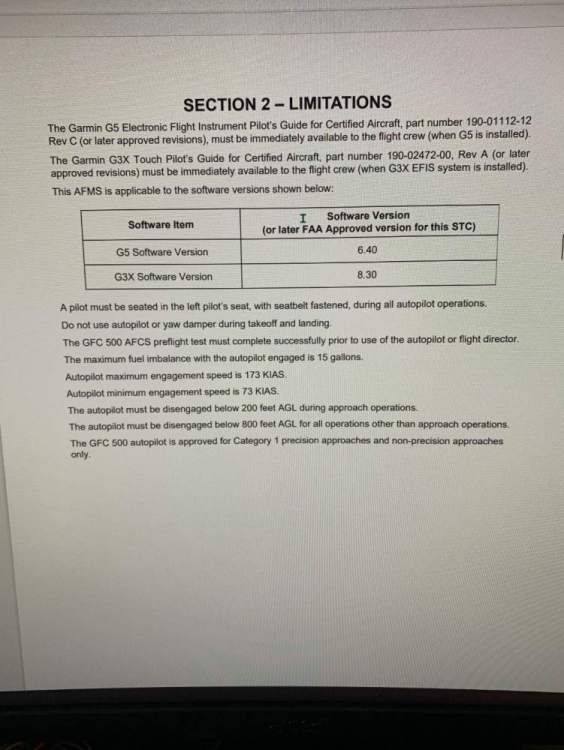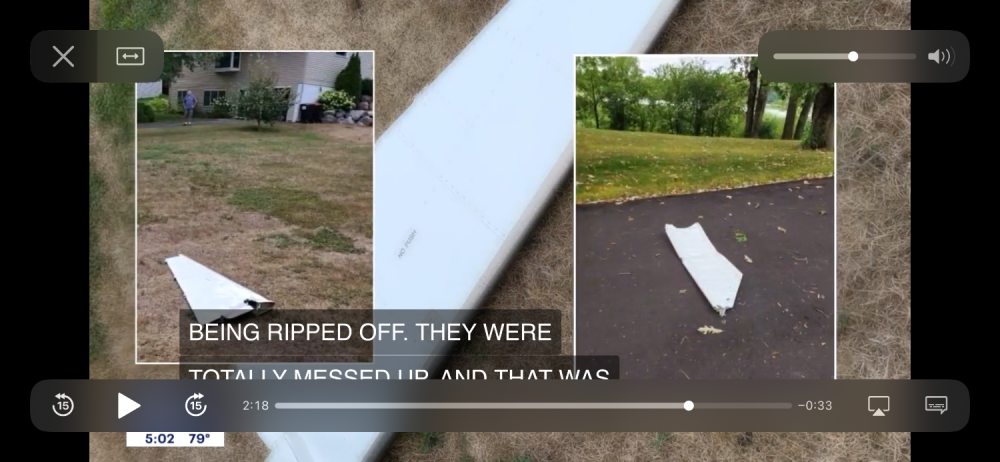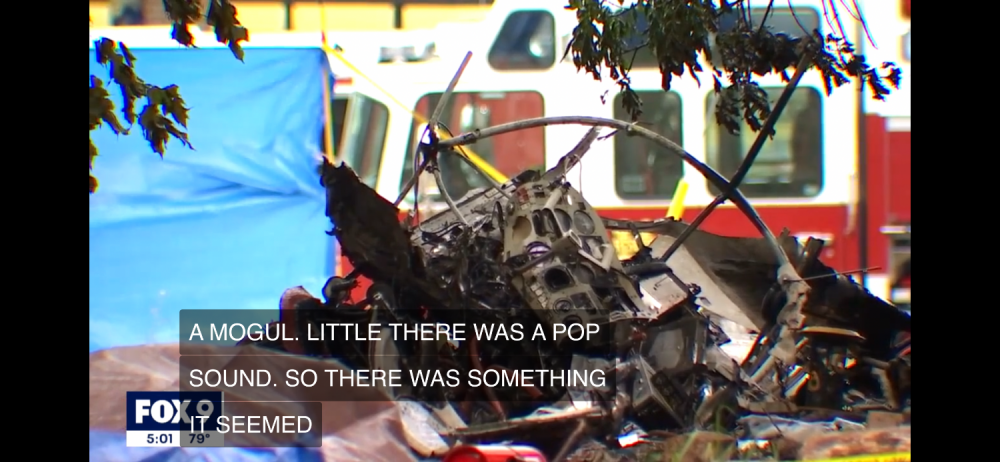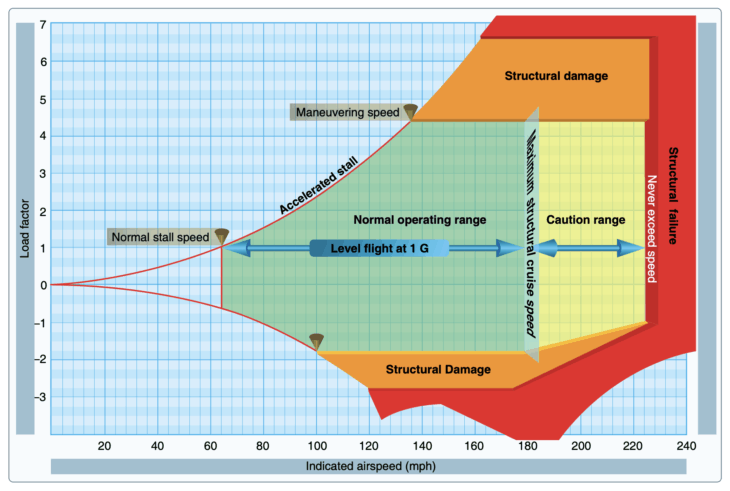-
Posts
3,935 -
Joined
-
Last visited
-
Days Won
7
Content Type
Profiles
Forums
Blogs
Gallery
Downloads
Events
Store
Everything posted by bradp
-
Hey all, Lynn found a significant amount of metal in the filter during annual. This is some sort of acute event since last oil change about 25 hrs ago. It’s been running fine. Compressions good. Regardless, Lynn and Ron have been discussing and we talked it over today. He’s going to pull #3 and scope the cam as a first step. Engine has 1050 hrs since factory rebuild in 2005 when it was converted to an A3B6 (no dual mag). The case will certainly need to be split. Then the decision point seems to be IRAN or OH, and if IRAN whether I ask Lynn to build up the engine in house with sent-out components vs Jewell etc do the work. Lead time seems to be an issue in pandemic world. If it’s a clearly spalled cam, it simplifies the decision. If the cam looks awful, I’ll likely go down the simple IRAN route. If it’s not the cam, are we down the rabbit hole with journal bearings, fretting etc and looking at IRAN still or just do the overhaul for the core? Ron mentioned he thought the metal didn’t look like typical for cam spalling- more shredded, but I don’t have the experience and can’t tell much about the character of the metal from the picture I have. The metal is ferrous (ie magnetic). Presuming we keep the plane, I’m thinking IRAN the mid time engine if it looks like the top is the root cause. If I were to think about selling it (and this conversation has come up given growing family), I’d think I’d overhaul / factory rebuild it do maximize the SMOH recoup (whatever that may be), marketability. If this is a bad cam… DLC lifters?
-
This is not my Mooney/AFMS (for a piper, found on the internet), but the altitude limitations are with respect to AGL, not MSL, and are the same for all GFC-500 installations
-
LOL. Nathan and Tamara and Lynn are great. Not so sure about that Ron character though ;-). My plane is with them for annual now. I’ve been nothing but happy with their maintenance and the fact that they are down to earth good people is nice too.
-
So on an ILS at minimums will you be 200 feet too high or 200 feet too low I had my G5 calibrated by the shop- they are spot on now, less than 10 feet. Interestingly the GFC 500 altitude selector and autopilot computer both use the G5 altimeter. So it’s primary in that particular scenario. Autopilot is certified to 800AGL on the way up, 200 AGL on the way down .
-
I wonder if the OP planes had the modworks IG doors and they were taken off at some point - if you already had the caliper rotation this would be the best route forward. IG doors are often removed if the plane operates from an unimproved field.
-
This came up on the Facebook group. I can’t recall and I’m sure we’ve discussed this previously, but why does the POH have the gear position “down” for an obstacle departure with the reference to 115MPH? I remember that there is a drag penalty during gear transit, but you’d think a retraction in ground effect would have a performance advantage over the gear hanging out…? POH cut and paste… : ElectricFuelBoostmmp-ONatstartof takeoff roll. Power - FULL TEHROTTLE AND 2700 RPM- Aircraft Attitude - WFT NOSE WHEEL AT 71MPH(62 KTS.) IAS. Climb Speed - 76 MPH (66 KT'S. ) IAS until clear ~f obstacle, then accelerate to 105 to Cs 100'mS.)IAS. landing Gear - RETRACT IN CLIMB AFTER 115 MPH (91. LE. Flaps - RETRACT AFTER CLEARING CLEARING OBSTAG: &%ring OBSTACLE. Electric Fuel Boost Pump - OFF,
-
Prop Strike due to partial gear collapse
bradp replied to Urs_Wildermuth's topic in Mooney Safety & Accident Discussion
Almost never a good idea to take a damaged aircraft back into the air purposefully. If it’s a gut reaction to do something less safe in a reaction to an emergency, probably ripe to be trained away. That’s the only way to avoid gut reactions. Training and planning. -
Expectation Bias and avoiding gear up landings
bradp replied to KB4's topic in Modern Mooney Discussion
One other helpful thing - if I’m doing something that is not normal - do something awkward to remind yourself of a not normal situation. Example if I don’t extend my gear at my usual spot, I’ll stick my hand on the gear lever or dash pointing to it until I select it. I’ll do this if my kids are being loud or distracting in the back. I did it one night when my then 4 year old woke up with a night terror as I was turning onto final. Another time when she woke up and started kicking my seat back when I was flying an ILS in IMC … so that was fun. -
Expectation Bias and avoiding gear up landings
bradp replied to KB4's topic in Modern Mooney Discussion
Good idea. Could just do it with a ram clip and an inspection mirror. My family would probably repurpose the darn thing though -
Expectation Bias and avoiding gear up landings
bradp replied to KB4's topic in Modern Mooney Discussion
I can only stand to look at the floor once (plus dash light), then confirm the dash light alone after that. I don’t like picking my head up and down multiple times either on short final or in IMC. -
Kids scream. Kids movies go on. I hear kids movies through my headset. Rinse and repeat.
-
Plus they could still support them ! Oh wait. There is zero incentive to do that.
-
Wow that seat looks uncomfortable for a round the world flight. congratulations on the crossing! How many rotax engines have done that?
-
-
Value impact - hard landing and prop strike
bradp replied to krb5137's topic in Modern Mooney Discussion
Doc how is a crumpled dented and torn upper skin even airworthy? Doesn’t that affect both the structure of the wing and the airflow over it? I also suppose if the aircraft has been subject to enough abuse to push a MLG skyward, think of all those other abusive landings that didn’t result in a structural repair. -
Value impact - hard landing and prop strike
bradp replied to krb5137's topic in Modern Mooney Discussion
If only there was a Mooney doctor up north…. -
Value impact - hard landing and prop strike
bradp replied to krb5137's topic in Modern Mooney Discussion
If you wish to pursue I’d take it to another reputable MSC (top gun if you’re out west) to do a PPI (? Turn into annual) with special focus on repairs and and structural inspection. -
This looks pretty cool. I always wondered about crop dusters and how they work.
-
Caution that unless you are truly in VMC. I once got a case of the leans from visual cues / illusion due to layers creating a false horizon. Cure was to go head down and stay there. I also recall one time turning onto final for an approach at the old IGX in IMC, I inadvertently kicked off the AP (CIIb without any alarm/indication of having done so). Was hands off and looked down for maybe 2 seconds to reference my chart, simultaneously turbulence, and I’m in a 30+ degree nose down turn on resuming my scan. Of course it felt like 1G the entire time. Practicing upset recovery in foggles is probably the most valuable part of any BFR/IPC. Things happen fast and often together. IMC - even “gentleman’s IMC” - can be just as unforgiving. I agree with Don. Remember that bo crash over Long Island? That prompted me to ditch the TC and do multiple redundant sources of attitude information. So now I’ve got an RC Allen electric, two G5’s and FWIW an AHRS in my GDL52R hardwired to an Aera 660. Blue button + ENV protection + redundant attitude info is a powerful cure to this stuff.
-
ok I get departure stall. but why departure stall?
bradp replied to Yetti's topic in Mooney Safety & Accident Discussion
There was talk of this plane having come out of maintenance. Has that been verified? -
And minor point he gets the wing construction confused a bit - which is a little odd since he previously had an E. Wonder if I take for granted we Mooney pilots know how our planes are put together. I think there is value to every pilot parking his or her butt on a creeper during annual at least once.
-
Looks like three of us posted pretty much the same interpretation of the ads b data
-
If that ADSB track is correct the aircraft descended 1100ft in 3 seconds. That’s a vertical speed of 22,000 fpm! If start GS was 145 kias, and end was 121 kias (lost 24 kias ground speed). If accelerating that loss was due to a vertical component of acceleration and the total velocity vector could still be increasing over time. So horizontal velocity vector was near 121 kts. Vertical velocity vector was somewhere near 218 kts straight down. Distance between the 5th ping and the 1st (last) ping is about 500 ft on the map. The descent angle vector was about 63 degrees down. Total velocity vector was an estimated (just estimated if I remember any basic physics ) - 250 kts at least if I plug it into a vector calculator ( @aviatoreb help request). If we look at the ultimate load factor chart from the commercial pilot syllabus, we’d see that when Vne is exceeded structural failure can be expected to occur. When Vne exceeded and a load factor applied (say he pulled a load factor of more than 1), control surfaces and structural parts can and will be shed. Someone who’s good at math and has had more than an hour sleep help me out here.
-
Now combine that fact with the apparent 45-def nose up attitude. I think this is going to be a pull up and over stress event.


